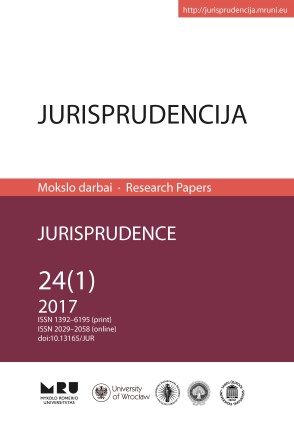DISKRIMINACIJOS DĖL AMŽIAUS DRAUDIMAS EUROPOS SĄJUNGOS TEISINGUMO TEISMO PRAKTIKOJE
PROHIBITION OF AGE DISCRIMINATION IN CASE LAW OF THE COURT OF JUSTICE OF THE EUROPEAN UNION
Author(s): Kristina AmbrazevičiūtėSubject(s): Law, Constitution, Jurisprudence
Published by: Mykolas Romeris University
Keywords: Directive 2000/78/EB; age discrimination; different treatment; ageing; employment relations
Summary/Abstract: On the level of the European Union, the adoption of Council Directive2000/78/EB has been the most important step in solving the problem of the ageing population. However, despite the established prohibition on age discrimination, the Directive refers to the specific status of age. The doctrine of law often emphasises that, contrary to other grounds of discrimination, age is not anunchanging factor. Everybody passes through different stages of age; therefore, the Directive presupposes greater neutrality of the age criteria. Moreover, in the traditional model of the labour law, age is one of the criteria that are commonly used by national legislators. Therefore, it is not surprising that the Directive provides for a number of clauses where age differentiation is justifiable and a Member State may digress from the prohibition on age discrimination.Under such conditions, the importance of the Court of Justice of the European Union (CJEU) becomes even greater, because only an analysis of the jurisprudencecan define the real content of the provisions of the Directive. The CJEU has already adopted a total of 34 judgments, i.e. an average of 3 judgments per year since thetime of the first judgment in 2005. It can also be noted that there are three dominant issues in these cases: the age-related termination of employment relations, and the acquisition or loss of special guarantees due to age.The CJEU has elaborated the “four-steps” test to check if the national provision does not contradict the Directive: first, whether the provision falls within the scopeof the Directive; second, whether it sets the different treatment on grounds of age;third, can it be justified by the legitimate aim; fourth, are the means to achieve this aim necessary and appropriate. Normally, the CJEU easily accepts the existence of the legitimate aim, if the social policy behind it can be demonstrated. Furthermore, the court recognizes additional grounds for justification based on Articles 2.5 and 4of the Directive. The most challenging part of court analysis is tied to the necessity and appropriateness of the measure. The CJEU often rules in favour of the national measures that establish different treatments on the ground of age. In jurisprudence, the arguments for the protection of human rights compete with the arguments of an economic nature, and are often out weighed by the latter. This also renders the jurisprudence of the CJEU casuistic and difficult to predict.
Journal: Jurisprudencija
- Issue Year: 24/2017
- Issue No: 1
- Page Range: 127-149
- Page Count: 23
- Language: Lithuanian

